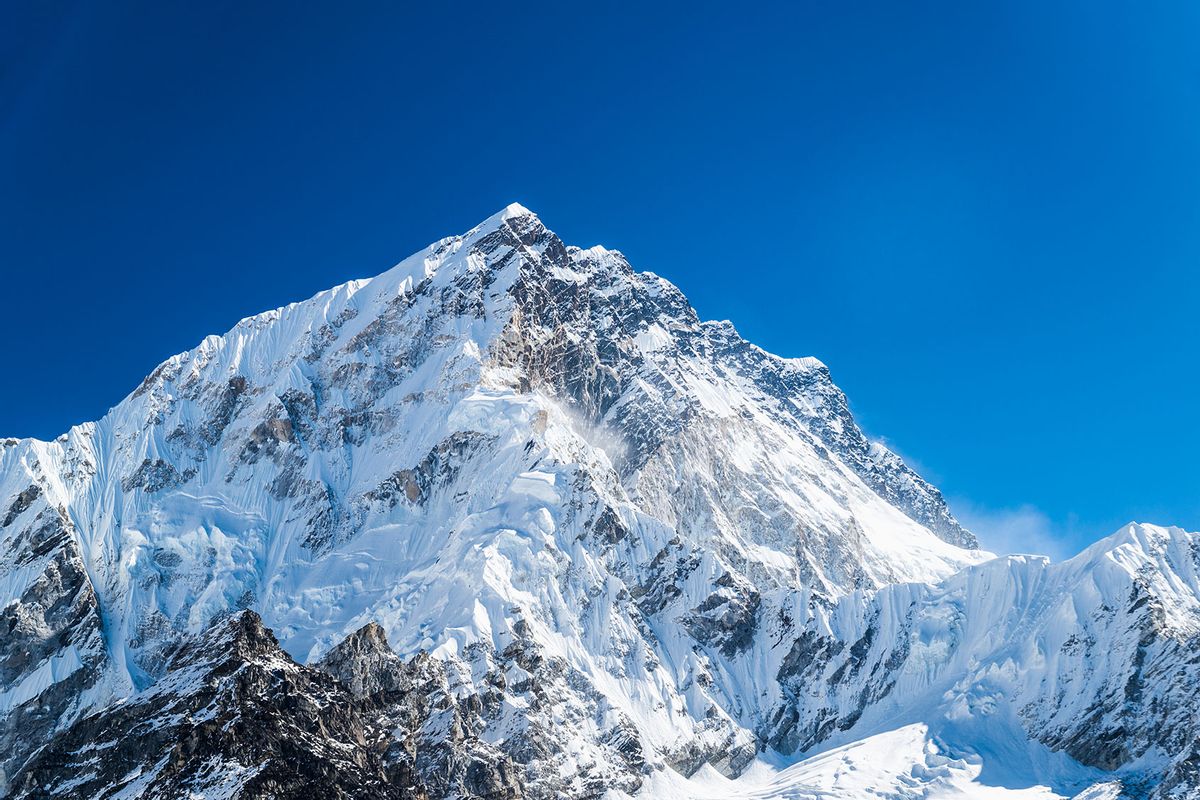Scientists radically rethink how the Himalayas formed millions of years ago, adjusting their age

Standing at nearly 9,000 meters tall and growing more each day, the Himalayas are the world’s largest and also youngest mountain range. It notably includes Mount Everest, which staggers above sea level at 8,850 meters (29,035 feet) high. But a new study shows they might be closer to an adolescent than a child — forming 15 million years prior than was once believed.
It was long held that the Himalayas, which stretch from Afghanistan to Myanmar along the border of China and India, formed between 40 and 50 million years ago when the Eurasian and Indian tectonic plates collided. But research published in the journal Nature Geoscience found that before this collision shot up mountainous rock across the region, the Himalayas already stood tall — at about 60% of their height today, said study author Daniel Ibarra, Ph.D., an assistant professor of environmental science at Brown University.
“It implies that you don’t need this continent-continent collision to achieve this high topography,” Ibarra told Salon in a phone interview. “This has implications for other places around the world, such as Nevada around the same time, as well as some of the pre-Andean elevations in South America.”
The Himalayas influenced how species on the Asian and Indian subcontinents mixed and were key to the formation of certain climate cycles, like monsoons and the long-term carbon cycle, which keeps the Earth’s temperature balanced and also creates fossil fuels.
“The fact that there’s already a high Tibet starting at 60 million years pushes the origin of those biogeochemical cycles back even further.”
Rewinding the mountain range’s date of formation means scientists will need to rethink assumptions that were made about all of these ancient climate models, said study author Page Chamberlain, Ph.D., a professor of geochemistry at Stanford University. Now that that date has been pushed back to between 61 and 63 million years, “when you start to correlate all these different things, you now need to use a new number — a number that’s a lot older,” Chamberlain told Salon in a phone interview.
Around the time of their formation 60 million years ago, the world was much warmer and an explosive asteroid collision had just wiped out the dinosaurs. Ecosystems were starting to recover from the impact, mammals came into the fossil record and soon, primates would emerge.
Want more health and science stories in your inbox? Subscribe to Salon’s weekly newsletter The Vulgar Scientist.
“The lines of Tibet after the dinosaurs influenced a lot of the earth’s history, even driving the overall cooling trend that started after the dinosaurs died [and continues] till today,” Chamberlain said. “The fact that there’s already a high Tibet starting at 60 million years pushes the origin of those biogeochemical cycles back even further.”
By detecting this isotope in the rocks of the Himalayas, they were able to determine the altitude and age that the mountain range once was.
To determine the age of the mountain range, Chamberlain and his team used a technique called triple oxygen isotope analysis. Isotopes are alternate forms of the same element with different masses. Various manipulations of an element, like boiling, crystalizing or evaporating, change which isotope floats to the top or sinks to the bottom of a substance. The locations of heavier and lighter isotopes that were discovered in the Himalayas could therefore provide clues into how tall things were at various points in the mountain range’s history.
Only two forms of oxygen, oxygen 16 and oxygen 18, are typically used in isotope analyses, but Chamberlain’s method also measures a third isotope, oxygen 17, which is an extremely rare form of the molecule that makes up just 0.4% of the world’s oxygen. By detecting this isotope in the rocks of the Himalayas, they were able to determine the altitude and age that the mountain range once was.
“There was no way to measure early Tibet because the kind of rocks you need to do that don’t exist there,” Chamberlain said. “But using this particular measurement opens up a whole new way to do this.”
Previously, this technique was used to determine the temperatures of the oldest oceans on Earth and measure the evolution of the hot springs in Yellowstone National Park. In the future, the method can also be used to trace how things like evaporation and lakes changed over time, Ibarra said.
“It’s going to be exciting to see how the ability to measure triple oxygen isotopes can help us answer these big-scale earth system questions about how mountains have influenced climate and the carbon cycle over a long time period,” Ibarra said.
Read more
on geology

